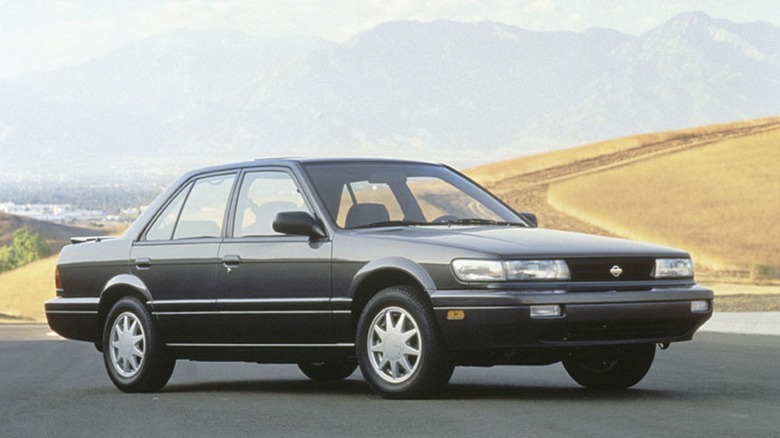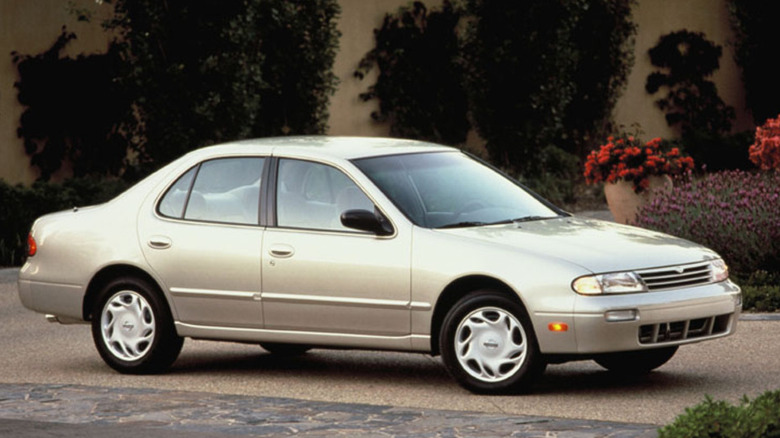Why Nissan Discontinued The Stanza In The US (And What Replaced It)
Here's a name that not many people might've seen in a while: the Nissan Stanza. Well, unless you're like me and have a passion for these old, forgotten vehicles. Even so, I've been working on and researching classic cars for about two decades and rarely see this name outside of JDM circles. This humble sedan traces its lineage back to the 1973 Datsun 710 (Nissan Violet), a smaller Datsun 610 (also called the Bluebird).
The name "Stanza" first appeared stateside for the 1982 model year, though the name actually debuted in 1977 in Japanese domestic markets. Yes, these early days of Nissan's international branding were a bit complicated, and the Stanza's reputation in the US was not too great either. The Washington Post sums up the perception: "The Stanza, introduced in 1982, just couldn't cut it in [the midsize sedan] segment. It was an ugly car bereft of personality. Even thieves hated the thing."
All the more reason to replace it, though not entirely, with a brand-new model for 1993: the now-ubiquitous Nissan Altima. Or, if you want to get technical about it like I usually do, the Nissan Stanza Altima. Confused? Well, Nissan dropped the name "Stanza" from its 1993 brochures, retaining a very small "Stanza" badge on the Altima's rear and printed the name in owner's manuals.
That said, this was still an entirely new design, with internal guidelines "to design efficient packaging and comfortable space; to provide peace of mind and enduring driving pleasure; and to increase safety and contribute to protecting the environment." This new platform followed the usual 1990s "bean car" trend, ditching the rapidly-aging squared-off body.
But why replace the name altogether?
The name "Altima," Nissan's vice president Earl Hesterberg told the New York Times, derives its meaning "from the Latin 'altus' [suggesting] 'a higher order,' as does its similarity to the word ultimate." Charles Brymer, president of the Interbrand Corporation, further claimed that the role of the word "Altima" was "to trigger that emotion." Various articles disputed whether or not it really was that effective, especially given that the car was still officially named the "Stanza Altima." This was done to help "ease the naming transition," said Hesterberg.
But, again, this wasn't its original name. Rather, it was the Stanza Altima, which, according to Nissan themselves, "was there more for regulatory compliance than a lack of confidence." Apparently Nissan were also concerned with people accepting and/or mispronouncing the name, though these concerns were unfounded and the correct pronunciation stuck.
Reading between the lines, the name follows with Nissan's general trend towards catering to the US market at the time, as well as vast improvements in quality control and manufacturing processes. This vehicle utilized Nissan's new "Intelligent Body Assembly System" (IBAS) and heavily localized production, with 70% of manufacturing components made in the US. Nissan also restyled their other sedans, namely the Sentra and Maxima, to compete with Toyota and Honda in foreign markets. Unlike these models, however, the Stanza's reputation was "dismal," as Car and Driver put it.
Nissan avoided the "Stanza" moniker altogether, referring to the Altima as "all-new." This, along with the price range, served as its main selling points, with the brochure stating in bold letters that the Altima was "a whole new concept in luxury sedans – affordability." Ultimately, the name "Altima" represented more than just a new platform, but also a fresh start for healthy competition abroad.

